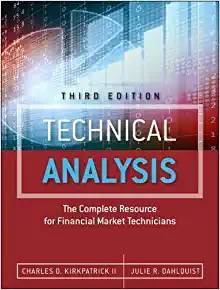Question
Download 61 months (December 2011 to December 2016) of monthly data for the SPDR S&P 500 Index ETF (symbol = SPY). Download 61 months (December
Download 61 months (December 2011 to December 2016) of monthly data for the SPDR S&P 500 Index ETF (symbol = SPY). Download 61 months (December 2011 to December 2016) of Alphabet Inc. data (symbol = GOOGL) and 61 months (December 2011 to December 2016) of Exxon Mobil Corporation data (symbol = XOM). Download 61 months (December 2011 to December 2016) of iShares 1?3 Year Treasury Bond ETF data (symbol = SHY).Be sure to use end-of-month data!Construct the following on a spreadsheet:
1. Calculate 60 months of returns for the SPDR S&P 500 Index ETF, Alphabet, Exxon, and the iShares 1?3 Year Treasury Bond ETF. (Please compute simple monthly returns not continuously compounded returns.) Use January 2012 to December 2016. Note this means you need price data for December 2011. On the answer sheet report the average monthly returns for the SPDR S&P 500 Index ETF, Alphabet, Exxon, and the iShares 1?3 Year Treasury Bond ETF.
2. Calculate excess returns for the SPDR S&P 500 Index ETF, Alphabet and Exxon. Use the monthly returns on the iShares 1?3 Year Treasury Bond ETF as your monthly risk?free return. On the answer sheet report the average monthly excess returns for the SPDR S&P 500 Index ETF, Alphabet and Exxon.
3. Regress excess Alphabet returns on the excess SPDR S&P 500 Index ETF returns and report, on the answer sheet, ?, ?, the r-square and whether ? and ? are different from zero at the 10% level of significance. Briefly explain your inference.
4. Use equation 8.10 to decompose total risk for Alphabet into systematic risk and firm-specific risk. That is, calculate total risk, systematic risk and firm-specific risk for Alphabet.
5. Regress excess Exxon returns on the excess SPDR S&P 500 Index ETF returns and report, on the answer sheet, ?, ?, the r-square and whether ? and ? are different from zero at the 10% level of significance. Briefly explain your inference.
6. Use equation 8.10 to decompose total risk for Exxon into systematic risk and firm-specific risk. That is, calculate total risk, systematic risk and firm-specific risk for Exxon.
7. Use equation 8.10 to estimate the covariance and correlation of Alphabet and Exxon excess returns.
please include answers in the attached excel sheet. All calculations should also be included in the same excel sheet on different sheets
 FIN 5550-WB1: Jack De Jong: Quantitative Problem Set #3: Due: Monday, February 27, 2017 by 11:59 PM: Name: Version: (Please insert the names or symbols of your two companies as indicated.) Problem: Points Questions Index Models: (50 points) 1 (10) 2 (5) 3 (4) (4) (2) 4 (5) 5 (4) (4) (2) 6 (5) Your Answers: Please insert your two companies: Avg. Return Excess Ret. Company #1: Measure Inference & Brief Explanation Measure Inference & Brief Explanation Alpha Beta R-Squared Systematic Firm-specific Total Risk Company #2: Alpha Beta R-Squared Systematic Firm-specific Total Risk Please insert your two companies below: 7 (5) SPDR iShares S&P 500 1-3 Year Index ETF Treas. Bd. Covariance Correlation CAPM and APT: (50 points) 1 (5) Risk Aversion 2 (10) Exp. Return 3 (5) Correlation 4 (10) Alpha 5 (10) Exp. Return 6 (10) Arbitrage
FIN 5550-WB1: Jack De Jong: Quantitative Problem Set #3: Due: Monday, February 27, 2017 by 11:59 PM: Name: Version: (Please insert the names or symbols of your two companies as indicated.) Problem: Points Questions Index Models: (50 points) 1 (10) 2 (5) 3 (4) (4) (2) 4 (5) 5 (4) (4) (2) 6 (5) Your Answers: Please insert your two companies: Avg. Return Excess Ret. Company #1: Measure Inference & Brief Explanation Measure Inference & Brief Explanation Alpha Beta R-Squared Systematic Firm-specific Total Risk Company #2: Alpha Beta R-Squared Systematic Firm-specific Total Risk Please insert your two companies below: 7 (5) SPDR iShares S&P 500 1-3 Year Index ETF Treas. Bd. Covariance Correlation CAPM and APT: (50 points) 1 (5) Risk Aversion 2 (10) Exp. Return 3 (5) Correlation 4 (10) Alpha 5 (10) Exp. Return 6 (10) Arbitrage Step by Step Solution
There are 3 Steps involved in it
Step: 1

Get Instant Access to Expert-Tailored Solutions
See step-by-step solutions with expert insights and AI powered tools for academic success
Step: 2

Step: 3

Ace Your Homework with AI
Get the answers you need in no time with our AI-driven, step-by-step assistance
Get Started


